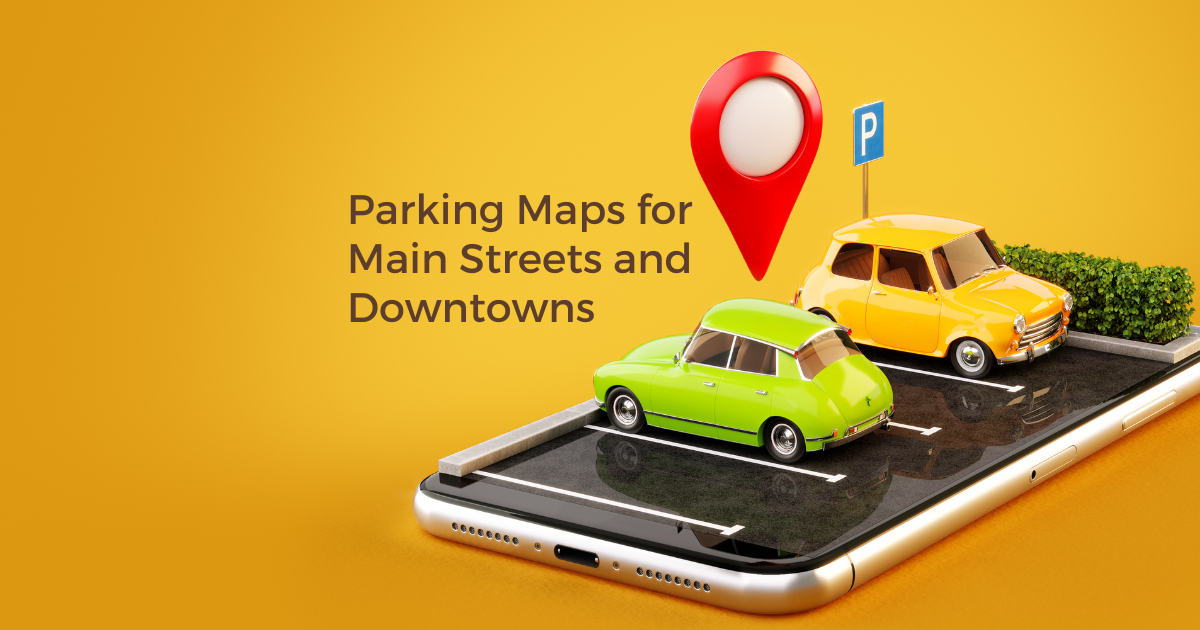
There’s nothing quite like the sense of curiosity and wonder that maps offer. If you love maps and mapmaking as much as we do, then check out this collection of interesting map facts and stats that we curated for you!
1. Some Maps Contain Phantom Settlements, Paper Towns, and Trap Streets
We’ve all heard of ghost towns: those once bustling and populated places that have since been forgotten about and abandoned. One could be forgiven for assuming that this is what the phrase “phantom settlement” refers to. However, this assumption would be wrong.
A phantom settlement (also known as a paper town) is a fictitious place added to a map in order to catch copyright thieves who plagiarize the map. After all, how could someone who did their own independent research and cartography possibly end up with a made-up location on their final product?
This same concept can be applied to smaller-scale maps with smaller-scale features. Imaginary roadways (trap streets) are another strategy. Even more subtly, cartographers may add a small curve in an existing roadway that does not exist. Once again, why would an original map have the same fictitious curve as the original copyright holder and creator?
Looking for extra trivia cred? Here are a few of the most famous paper towns out there:
Algoe, New York
The name of this well-known paper town is actually an anagram. Cartographers Otto G. Lindberg and Ernest Alpers mixed up their initials to create the name of this fictitious map entry, concerned about the threat of copyright theft. Years after “creating” the town in the 1930s, Lingberg and Alpers discovered that Rand McNally had included the entry on their own map. The company defended itself from these plagiarism accusations by pointing out that the paper town of Algoe had actually given birth to a true place. A local entrepreneur saw the entry and placed a general store called Algoe right where the map was marked! Decades later, this place would attain even greater fame when it was included in the award-winning novel Paper Towns by writer John Green.
Beatosu and Goblu, Ohio
These paper towns are unique in that they were not designed to protect copyright, but rather to send a message: a sports-themed message, to be exact. These entries were added to maps of Ohio by a rough University of Michigan fan in the Ohio transportation department. “Go Blue” is a chant often used by the UM faithful, while Beatosu is easier to understand when stylized as Beat OSU. (Beat Ohio State University.)
Argleton, England
This fictional Google Maps entry was discovered by users and then promptly deleted. While the simplest explanation could be that this was simply an error on part of the Silicone Valley giant, some conspiracy theories have arisen. Some assume that Google created this as their own copyright trap to catch imitators. Perhaps even more entertaining than the conspiracy theories, however, are the online jokesters who proceed to buy up a domain for Argleton and add fictitious businesses, town services, etc. to bring Argelton to life.
Some other paper towns
This list is incomplete but highlights a few other papertowns in the United States.
- Carmine, Pennsylvania
- Juxtapose, Oregon
- Point Pleasant, Indiana
- Relescent, Florida
- Sandy Island, New Caledonia
- Scarlette, Nebraska
- Steve's Landing, Illinois
- Tubsy, Washington
- Whitewall, California
2. North Isn’t Always Up
This is one of the most fascinating historical map facts. Most of us are so used to maps being oriented northward that it seems like the only way things could be. But of course, this is really just an arbitrary stylistic choice that we’ve all grown used to. From the perspective of outer space, there isn’t really an up at all.
Once you consider this, it won’t be surprising that many cultures throughout history have oriented their maps in different directions. One of the better-known examples of this comes from medieval Europe, where some maps were made to place the holy city of Jerusalem at the top. From that perspective, therefore, the maps were set up with East and West represented by the Up/Down axis.
Uruguayan artist Joaquín Torres García is also well-known for his pen and ink depiction of South America entitled America Invertida. As you may have guessed from the name, this image inverts the traditional north-oriented layout we’re used to seeing, pointing the Patagonian south end of the continent toward the sky.
3. Google Maps Holds the Lead (But Isn’t the Only Player in the Game)
Take a look at the statistics about maps online and you’ll see there is a clear leader. When it comes to total application users, Google Maps is the most popular option in today’s landscape. There’s no doubt that the platform is quite robust as a general-use tool. However, the popularity of dozens of adjacent tools -- ranging from Waze to Trucker Path to Proxi -- shows that there is also a great utility for more niche options.
If you’re a fan of maps or even an amateur cartographer yourself, you should expand your horizons with the technology you use. And we may be biased, but we think our product is worth checking out. Proxi is designed to make creating useful maps easy enough for anyone to do for themselves. This tool can be particularly valuable to local media teams, economic development organizations, influencers, and concierge teams.
4. Map Projections Vary…a Lot!
The planet you see in any two-dimensional map of the world will depend a lot upon the projection that the cartographer chose to use. After all, representing the surface of a spherical shape in a flat diagram isn’t exactly easy. All projections will have some flaws and some virtues, but none is “perfect.”
One of the most famous (and famously flawed) map representations is the Mercator projection. You’ve probably seen this one before: these are the 2D maps that make Greenland look roughly the same size as Australia. The Mercator projection expands the northernmost and southernmost reaches of the globe to be larger than they really are. The advantage of this approach is that equatorial zones have no distortion whatsoever -- and that the distortion in many temperate areas is also minimal.
Moreover, the Mercator projection also offers constant true direction. This concept refers to the fact that a straight line connecting any two points on the map represents the direction that a compass would show.
Later projections based in response to the Mercator projection, such as the Robinson projection, attempted to correct these distortion problems. The Robinson projection become popular enough to be adopted by major publications such as Rand McNally and National Geographic. However, it was not without its shortcomings.
Namely, the Robinson projection traded distortions with the Mercator projection. While its north/south extremes are more accurate, Robinson maps do not offer constant true direction. For some situations, such as seafaring, the Mercator projection is actually much more accurate and useful. Many casual observers, on the other hand, prefer the more aesthetically pleasing design of the Robinson projection.
5. There’s More than One North Out There
Believe it or not, there are actually two or three norths out there, depending on who you ask: the magnetic north pole, true north, and grid north. Here’s a quick look at the fun map facts of each one:
The Magnetic North Pole
Earth’s outer core contains large amounts of molten iron, which causes the planet to be enveloped in a magnetic field. The poles of this magnetic system lie at the north and south ends of the planet. But they are more of a physical phenomenon than a fixed location. They are always drifting and wandering around, and have even swapped places with each other in the past.
The earliest documented journey to the magnetic north pole was completed by James Clark Ross, who identified the location of the pole on a journey through the Boothia Peninsula in Canada’s Nunavut territory in 1831. Since that time, the pole has been drifting away from Canada and towards Siberia -- and interestingly enough, the speed at which the magnetic north pole moves is increasing. Currently, the north pole moves an estimated 45 kilometers per year.
True North
Of course, while it may be interesting that the magnetic north pole is always moving, that doesn’t mean it’s always useful in practical map usage. True north is based on the earth’s access and is unmoving. It’s located at the “top” of the earth, so to speak. (Even though our friend from earlier in this article, Joaquín Torres García, would probably take issue with this terminology!)
Grid North
As the name indicates, Grid North centers north around a particular grid or schemata rather than either of the previous two “norths.” This concept is especially popular in the UK, where land plots are typically aligned with a grid that spans from the “top” to the “bottom” of Great Britain. A similar concept could certainly be applied to any grid system, as there can be minor variations between which direction indicates the pragmatic “north” of the grid and the North Pole and/or True North.
Related Articles
Get Inspired
View All Featured MapsAdventure Awaits!
Check out some of the latest articles on our blog








.png)
